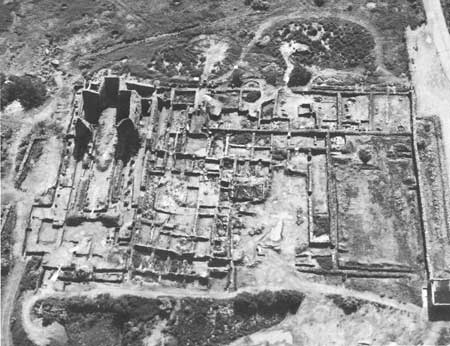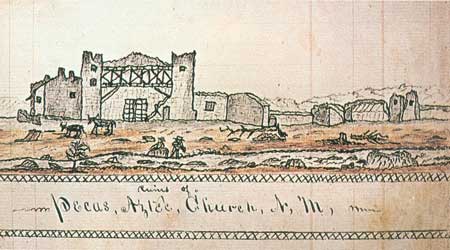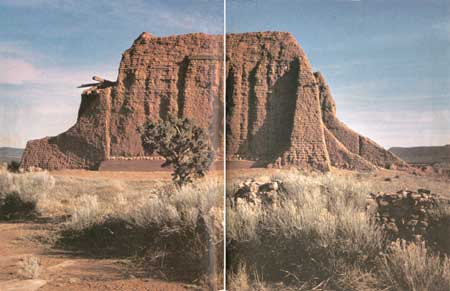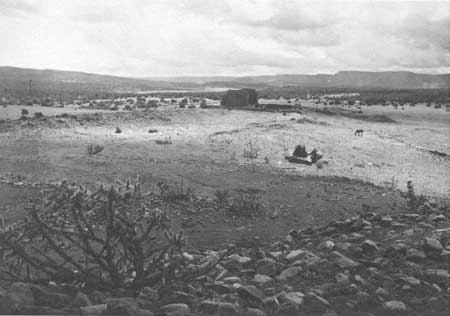

Contents Foreword Preface The Invaders 1540-1542 The New Mexico: Preliminaries to Conquest 1542-1595 Oñate's Disenchantment 1595-1617 The "Christianization" of Pecos 1617-1659 The Shadow of the Inquisition 1659-1680 Their Own Worst Enemies 1680-1704 Pecos and the Friars 1704-1794 Pecos, the Plains, and the Provincias Internas 1704-1794 Toward Extinction 1794-1840 Epilogue Abbreviations Notes Bibliography |
"The view of Pecos, as it now lies, without the least addition," wrote Lt. J. W. Abert in his journal entry for September 26, 1846,
On a similar day, August 3, 1975, closest Sunday to the feast of Our Lady of the Angels, a procession strung out along the path west of the convento ruins on the way to celebrate Mass in the roofless church. The clouds and their effect were just as Abert had described them, the shades of color and light just as fleeting. The tenth archbishop of Santa Fe, smiling, walked in front. Behind him, the men of Pecos village carried the restored painting of Nuestra Señora de los Ángeles as a banner. From Jémez, a delegation of the Pecos remnant had come to take part, and from Washington, D.C., New Mexico's two United States senators. In one sense, the scene was complete in itself—the pageantry of the movement, the tolerant presence of three cultures, the glory of the natural surroundings—enough to delight anyone. Yet for the spectator who knew something of the history of the living Pueblo de los Pecos, another dimension lay behind the scene, a dimension that stretched far back beyond the time when the people and the place had parted company.
| ||||||||||
 Top Top
|
| ||||||||||







